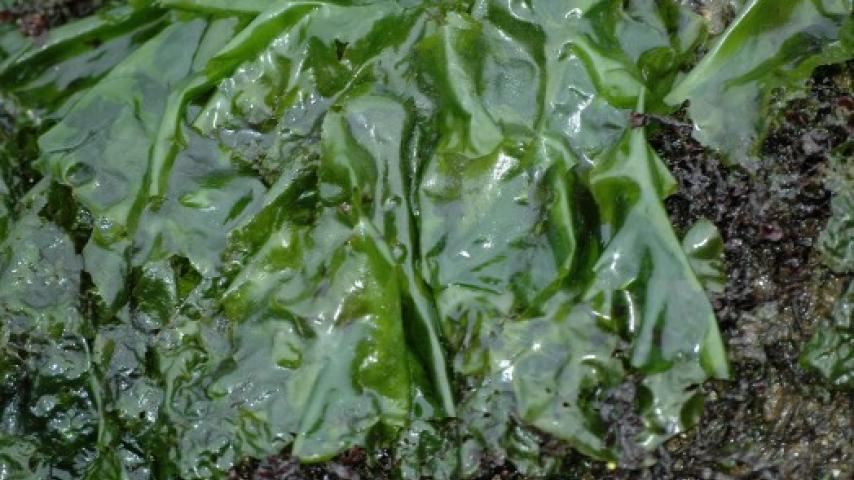This green alga really does look like lettuce, with its featureless green blades, curled around the edges.

KINGDOM Plantae - PHYLUM Chlorophyta - CLASS Ulvophyceae - ORDER Ulvales - FAMILY Ulvaceae
It grows in both high and low intertidal zones, attached to rocks, pebbles, shells, and bits of wood, but may detach and float around, often collecting in tide pools and washed up on beaches. Tolerant of brackish water, it occurs well up in some estuaries. The fronds appear to grow larger when unattached, sometimes reaching a half meter in length but only two cells thick, looking like green toilet paper!
Sea lettuce is a common item in the diets of some polychaete worms, crustaceans (amphipods and crabs), snails, and sea urchins. It is also an important food for wintering flocks of Brants (an Arctic-breeding goose). Rich in iodine and some vitamins, it is also used by humans as food (“green laver”) in some regions.
Sea lettuce, like other seaweeds and more primitive plants, exhibits alternation of generations. The visible fronds constitute the spore-producing (diploid) generation. They release spores that develop into gametophytes (haploid) that look just like the sporophyte but are then both male and female plants; thus self-fertilization is not possible. Often synchronized with moon phases, the gametophytes in turn produce sex cells that swim toward the light. Male and female gametes fuse to produce individuals of the sporophyte generation, which then swim away from the light to attach again to the sea floor.
Because of the large surface area of the fronds, sea lettuce grows especially well where there are high levels of nutrients to absorb, and it is thus tolerant of a fair level of pollution. Where especially thick, it can block out enough light to hamper photosynthesis of plants growing below it. Where it has washed up on European beaches in prodigious quantities, the decomposition of this alga has produced enough methane gas and hydrogen sulfide to pose a health hazard; a few people have died from breathing the fumes.